By Gareth Smyth
The recently published translation from French of Eric Rouleau’s memoirs open up for English-language readers a breadth of experience and vision in Middle East journalism unrivaled in the Anglophone world except by David Hirst. Rouleau, who died in 2015, was an Arab Jew born in Cairo in 1926 two decades before the creation of the state of Israel transformed the region. Rouleau’s cosmopolitan yet grounded identity shaped the energy and commitment of a 60-year career during which he met major players of his time.
At the center of his concerns was the Palestinian-Israeli conflict, which developed for two decades in the shadow of Gamal Abdul Nasser, Egyptian president from 1956 until his death in 1970. Rouleau wrestles throughout with shifting loyalties of land, nation, and religion. Israel’s victory in the Six-Day War of 1967— “this lightening war, this blitz”—is a pivot in his account:
“…Nasserists, Ba’thist, socialists, and communists, all were considered responsible for the military rout and the dismal failure of the political system. The disappearance from the political stage of those secular currents left a huge open gap into which political Islam would swiftly slip. An unusual spectacle then attracted my attention: attendances in mosques rose to such numbers that the faithful who could not enter them were praying on adjacent sidewalks and streets, hampering the circulation of cars and pedestrians. This was a perfectly normal phenomenon: religion is a refuge for people in distress and offers reasons for hope. ‘al-Islam huwa al-hal’ (‘Islam is the solution’), the slogan Islamists later adopted, was steadily gaining credibility for lack of anything better. This was all the more so when many of my Muslim interviewees attributed to victory of the Jews to their dedication to their religious traditions, and their faith in their Holy Scriptures that legitimated their state in Palestine. Muslims, according to the new Islamist trend, had been vanquished because they had turned their backs on their religion by adhering to secular ideologies like Nasserism, Ba’thism, socialism, and communism.”
For Israel, 1967 brought the conquest of Gaza and the West Bank, parts of mandate Palestine left outside the Zionist state established in 1947-8. Occupying the West Bank changed Israel, writes Rouleau: “…the transformations it would experience were political, economic, cultural, religious, and ethical. As in the Arab world, religious fundamentalism would become widespread in the country. Settlers, rabbis, and their yeshivot (religious schools) gradually took control of a large fraction of the Occupied Territories. They formed a large pressure group whom successive governments scarcely dared to challenge.”
Just as the determinedly secular, nationalistic PLO was ceding ground to Islamists, so the Israeli Labor Party went into decline, losing out to the “expansionist right,” with 1977 producing Likud’s first parliamentary majority. Rouleau recalls a four-hour exchange in 1969 with an 83-year-old David Ben-Gurion, Israel’s prime minister on the state’s foundation, who rejected the official Israeli account blaming Nasser for the 1967 War.
Ben-Gurion, wrote Rouleau, regarded new Jewish settlements in the West Bank as “a mortal threat to the Zionist entity, taking into account the demographic superiority and higher birth rate of Palestinians, who could not be absorbed without making the Jews a minority in their own state.” Ben-Gurion’s tone was more heated than today’s critics of the resulting Israeli apartheid: Rouleau recalls him calling Menachem Begin, Likud leader and previously leader of the violent Irgun group, a “typical Hitler-type racist ready to annihilate all Arabs to seize the entire Promised Land.”
The 1967 war also began closer United States support for Israeli policies and practices—both from right-wing fundamentalists and “pragmatists” like Henry Kissinger—as what Rouleau calls the “deadly trap” of the “colonization” of the occupied West Bank developed. The PLO’s abandonment of its call for a secular state across historic Palestine in favor of a restricted Palestinian state on any part of it did not lead successive Israel governments to accept “land for peace”: between 1967 and 2008, Rouleau writes, 20 percent of the non-Jewish population of the West Bank saw the inside of Israeli prisons.
Rouleau highlights the interweaving of religious fundamentalism with nationalism by Benjamin Netanyahu, who became Likud leader in 1993. Just a month before Yitzhak Rabin, the Labor leader who had signed the Oslo agreement with the PLO, was murdered in 1995, Netanyahu denounced Rabin’s argument that the West Bank occupation should not be justified by the Bible, which Rabin had said was not a “mere collection of land registers.”
“This is wrong, Mr Rabin!” Netanyahu told parliament. “The Torah bears testimony to the indissoluble links that we have woven with this territory for four thousand years; it is therefore our land register.”
Interestingly, Rouleau’s memoir makes no reference (other than Mossadegh’s 1951 oil nationalization influencing Nasser) to Iran, which has become a growing focus in recent years both of Likud and pro-Zionists in the U.S. In Iran and Palestine: Past, Present, and Future, Seyed Ali Alavi, a teaching fellow in London University’s School of Oriental and African Studies, examines the place of nationalism and religion in the relationship between Iran and the Palestinians since the 1979 Iranian Revolution. Like Rouleau, Alavi points to the Arab states’ military defeats in 1967 and 1973 as undermining Arab nationalism, quoting PLO leader Yassir Arafat’s description of the Iranian Revolution as bringing “basic changes” in “our Islamic nation.”
The confluence of Iranian nationalism and Shia Islam goes back to the Safavid dynasty (1501-1722), which made Shi’ism the official religion of its multi-national state. In the 1960s and 1970s, Iranian revolutionaries followed Ali Shariati in linking Shia notions of “justice” to the contemporary “anti-imperialism” of third-world leftists: hence Israel was a “puppet of imperialism.” This encouraged instant rapprochement following the 1979 Revolution, when Arafat was reportedly the first foreign leader to pay homage to Iran’s new ruler, Ayatollah Ruhollah Khomeini, who handed over the former Israeli embassy building.
Alavi runs through the underlying tensions that quickly surfaced as Arafat, who received funds from conservative Sunni-led Arab Gulf states alarmed by the Iranian Revolution’s egalitarianism, sided with Saddam Hussein’s Iraq in its 1980-88 war against Iran. Khomeini disliked the PLO’s pan-Arab ideology while stressing the Muslim connotations of Palestine, especially of Jerusalem (al-Quds in Arabic). Alavi writes:
“Since the war began, the Iranian officials mainly used the designation Doshman-e Baathi-Sehyounisti (Zionist-Baathist enemy) when referring to the Baathist regime. In this regard, the issue of Palestine was not marginalised as some may expect. Rather the religious and sacred dimensions of the liberation of Quds [were stressed] for the Iranian fighters on the ground…the Iran-Iraq war was perceived by veterans and revolutionary Iranians as a foreign-imposed conflict designed to prevent Iran from exporting its Islamic ideology and revolution abroad.”
For Khomeini, “the Palestinian question transcends national borders and is thus an issue with relevance to every individual Muslim as instructed by the Quran.” But it was clearly also a matter of resisting “foreign” control, an “anti-imperialist” struggle for a kind of “national liberation.”
Alavi highlights a speech by Khomeini’s successor, Ayatollah Ali Khamenei, given in Tehran in 2011 to the Fifth International Conference for Supporting the Palestinian Intifada. This clearly referred to nation. “Palestine is the primary issue among all common issues of Islamic countries,” said Khamenei. “This issue has unique characteristics. The first characteristic is that a Muslim country has been taken away from its people and entrusted to foreigners…” Khamenei went on to call for the future of Palestine to be decided by a referendum of “all the original people of Palestine – including Muslims, Christians and Jews and not foreign immigrants…” Such a poll would presumably take place within the national borders of mandate Palestine.
Iran’s leadership has been consistent, as Alavi charts, in support for the Palestinians, despite ups and downs first with the PLO and then with Hamas (formed 1987), which sided with the mainly Sunni Muslim opposition in Syria against the Assad regime allied to Tehran. Islamic Jihad is the only Palestinian group steadfast in agreement with Tehran. But backing the Palestinians, Alavi concludes, is “a crucial part of the Islamic Republic’s DNA.”
The role of Iranian nationalism in the thinking of the leaders of the Islamic Republic is both explicit and implicit. One school of thought finds greater continuity in the regional policies of the Shah and the Islamic Republic than is often supposed: this has been recently explored in a collection of essays by Roham Alvandi, professor of international history at the London School of Economics, who argues that the latter stages of the rule of Mohammad Reza Shah “marked the return of Iran from the periphery to the centre of the global stage, whence it has never returned.”
Clearly, not every decision of the Islamic Republic’s leaders can be attributed to Islam or the cause of the global dispossessed. Iran has consistently supported Christian Armenia in conflicts with Muslim Azerbaijan, which has in recent years developed closer ties with not only the U.S. but Israel. Although analysts dispute its seriousness, Iran in 2003 unsuccessfully offered the U.S. talks for a comprehensive settlement of their disagreements, including over militant Palestinian groups and Lebanon’s Hezbollah.
The mix of Iranian nationalism and Islam – the interweaving between them – has varied over time. Some close to President Mahmoud Ahmadinejad (2005-13), particularly his chief of staff Esfandiar Rahim Mashaei, upset many senior clerics by evoking an Iranian nation that espoused the only “true” Islam.
Khamenei himself last year proclaimed, “The Iranian nation is an independent nation: a dear one,” arguing that the dynasties preceding the Islamic Republic “made the nation submit to the imposition of other powers” while the 1979 Islamic Revolution had established “dignity” and independence. In its official response to the U.S. abandoning its commitments under the 2015 nuclear agreement, Tehran denounced “Mr. Trump’s absurd insults against the great Iranian nation.”
Some observers argue such nationalism is new in the Islamic Republic, departing from a purely religious world-view that supposedly drove the leaders of 1979. In Iran Reframed, Narges Bajoghli, assistant professor of Middle East studies at Johns Hopkins University, detects increasing nationalist themes in films made by or for the Revolutionary Guards and wider regime.
Hence Bajoghli argues Tehran’s Sacred Defense Garden and Museum, opened in 2012, is “part of a larger drive to modernize Tehran’s architecture through new futuristic structures…to transform Iran from a city dotted with gray buildings and endless murals of war martyrs to one boasting bright billboards and high-rises.” Moreover, “The war is recast as a nationalist project in this museum rather than a religious quest, as it has been narrated in regime-produced martyrs’ museums.” Bajoghli argues that “celebrating martyrs” has been replaced by “a narrative of nationalism, dignity and pride.”
Bajoghli creates further dichotomies in describing ceremonies predating Islam, like Nowruz, as “non-Islamic” and “rooted in Zoroastrianism.” But according to Mary Boyce, the late Professor of Iranian Studies at the University of London, Nowruz’s roots go back long before Zoroastrianism as a celebration of spring. Iranians place the Quran alongside fertility symbols on the haftseen table marking Nowruz – rather as Americans eat chocolate eggs at Easter.
Identities are rarely simple and they evolve over time. This is richly illustrated in the work of Eric Rouleau, who began life as an Arab Jew and left it as one of France’s most distinguished journalists. May he rest in peace.
Eric Rouleau Truth and Lies in the Middle East: Memoirs of a Veteran Journalist 1952-2012, American University of Cairo Press
Seyed Ali Alavi Iran and Palestine: Past, Present, and Future, Routledge
Narges Bajoghli Iran Reframed: Anxieties of Power in the Islamic Republic, Stanford University Press
Gareth Smyth, who has reported from the Middle East since 1992, was 2003-7 the chief correspondent of the Financial Times in Iran.

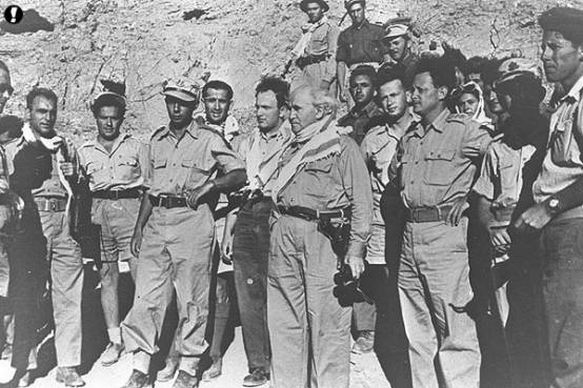
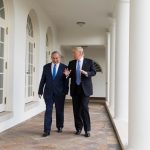
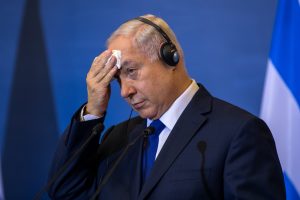
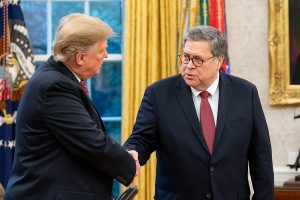
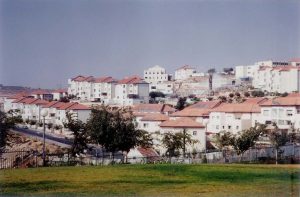
Thank you Gareth Smyth for the well researched and well written article! Keep up the good work!
To Khomeini national borders in the Muslim world was not an important issue: to him Islam was above everything! He came to the realisation of us as a nation with a strong national identity and territorial integrity during the Iran Iraq war and the siding of most of the Sunni rulers with Saddam which highlighted the importance of race and nationality rather than Islam or sectarian identity! However, even during the war they kept referring to us as “soldiers of Islam”, rather than as the Iranian soldiers!
Confronted by the Iranians’ increasing patriotism and unprecedented resentment towards Islam, due to the corrupt authorities and their exploitation and violations of the human rights in the name of Islam, and alarmed by the prospect of further unrest and war on Iran, for the authorities in order to continue to manipulate and prepare us for war and for the next sham elections, the only option has been to paint themselves as ‘nationalist Iranians’.
The frequent insertions of “the Iranian nation” in the clerics’ speeches, specifically following the violent post election street protests of 2009, has been purely a survival strategy!